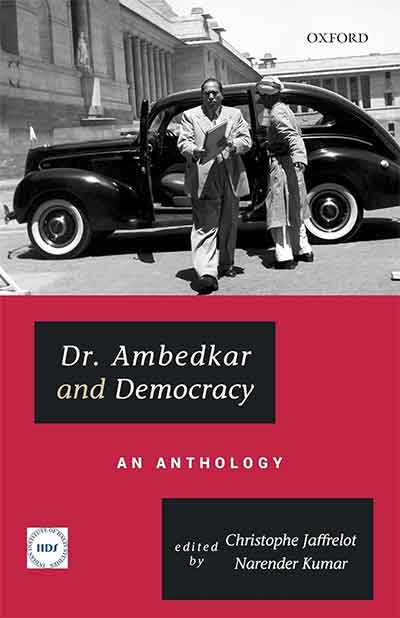The sound of drilling, hammering, crushing is louder than the thoughts in my head (didn’t know that was possible!). This despite the hundred odd meters between the construction site and my home, and the sound of waves breaking on the shoreline as a relief from nerve-wracking industrial sounds.
But what about the construction workers? Don’t they feel the disease created by the sound of these machines frantically at work? Do they wear noise-reduction headphones like shooters and gaming folks who use it as a way to shut out the world while they enter their virtual realities? Unlikely. In a country where construction is rampant and labour is cheap and dispensable, and in an urban megalopolis where there are more people than the space for them to live (20,000 per kilometre/0.6 miles) and more vehicles than road span 1900 per kilometre or 0.6 miles, noise cannot be considered a hazard.
| Object Density, Mumbai | Length of area |
| 20,000 people | 1 kilometer, 1000 meters, or 3281 feet |
| 1900 cars at 14 feet per car = 7.6 kilometers, 7600 meters, or 25000 feet (14 feet is the smallest sedan size considered to average out large vehicles and hatchbacks) |
Given that Mumbai’s urban roads mostly have two lanes, the span would reduce to 3.8 kilometers, 3800 meters, or 12,500 feet, about 3.8 times the existing span of 1 kilometer, 1000 meters, or 3281 feet (if all cars were brought to a halt, then they would be on top of each other) |
With no way to know the mental and emotional response of those on the construction site, and feeling acutely the loss of the 100 or more trees and of the accompanying silence, I began asking myself about what a 350-foot (106.68meters) monument on a 100-foot (30.48meters) concrete pedestal represents?
The question led me to discover Waiting for a Visa, written by Dr. B.R. Ambedkar to illustrate the tyranny of the caste system through a set of six incidents in his life and the lives of a few others from his community. A short 20-page book that should have been part of our history curriculum in India, but was omitted for reasons best known to the Education Ministry. I am wondering why our teachers did not recommend the book as suggested reading? The possibility is that they probably hadn’t read it either: That’s how under-promoted the book is in the country: if a tree falls in a forest with no one to hear it does it make a sound? When we don’t know about something does it even exist? A good way to hide our injustice.
Ambedkar was the chief architect of the Indian Constitution and he was a social reformer who advocated equality. He came from the much-discriminated untouchable community and he wrote the short book to highlight the reality of their situation for international readers. When he returned after five years of study at Columbia University, New York (USA), and London School of Economics, London (England), the oppression of casteism had been erased from his mind, only to be vividly revived by the people with whom he shared water, land, air, and cultural roots.

- Image courtesy: The Buddhist Center
The straightforward language of the book gives a clear glimpse at what the people of his community suffered at the hands of not just Hindus—the original drafters of the caste system—but also Mohammedans, Parsis, and Christians, who otherwise divided stood unified in their discrimination of the untouchables of India.
Water a resource that you and I so casually consume, each time we feel the pangs of thirst was often refused to the untouchables (I am intentionally using this politically incorrect word to emphasise the injustice meted out to a group of humans).
The refusal to give access to drinking water refutes the right to life. We may think that such unjust treatment of individuals has been abandoned in one of the world’s fastest growing economies. Only if that were true.
As recently as two years back, we killed a man from this ostracised community for using a hand pump to draw water during a heatwave (we became accessories to the crime by not advocating the end of such injustice; accessories definition). Despite various laws, the Prevention of Atrocities Act, and special reservations in educational institutions and in government employment, India has not succeeded at abolishing this tyrannical social injustice. A reminder perhaps that we need to strengthen our ethics and not merely our economy.
Can a statue achieve to bring about change where laws and acts have failed? Not just any old statue like the ones in city squares, but one that will stand taller than the Giant Sequoias or Redwoods, the largest living organism on Earth: Larger than life but not larger than the stature of the man it represents.
At a total height of 450-feet or 137-meters, the upcoming Ambedkar statue will be the third tallest in the world. Following after, The Statue of Unity in Gujarat, India, which at about 787-feet or 240-meters from the base has not managed to bring unity amongst the divided sects in the country, and the Spring Temple Buddha of China that too failed at inspiring China to adopt the tenet of non-killing and non-violence towards all living beings with its wet market trade. And much like, the famous Statue of Liberty that did not stop the erosion of liberties during the recently-ended term of the 45th president of the United States.
Untouchability is a symptom of repulsion. And repulsion is a violent act of the mind. People violating the dignity of a person, whether we call them untouchables, Dalits (meaning oppressed or broken), or Harijan (The people of God) are simply being self-destructive: Most of us have felt the wrath of our repulsion at some occasion or the other to recognise its self-destructive capacity. Repulsion rages within us and destroys our love and joy as much as it destroys the joy and love of another. Its tools are anger, violence, hatred, and even seemingly innocuous rudeness, irritability or snappiness.
When in our watch a person can be killed because he wanted to quench his thirst with a drink of water, then the violent reality of what we permit to thrive stares us in our face. Are we willing to look at it, people of modern India? We have been free for too long to ignore this oppression of freedom.
While greatness needs to be celebrated to remind us of the values a person embodied, the INR 1100 crore (INR 11 billion or about USD 152 million as of date) budget allotted to build the statue of Ambedkar could have been used to uplift the downtrodden in the Dalit community through initiatives that increase inclusivity and reduce religious intolerance, and through socio-economic interventions. This may have been a more befitting way to honour a man who dedicated a large part of his adult life to help rid India of social ill-will.
“I measure the progress of community by the degree of progress which women have achieved. Let every girl who marries stand by her husband, claim to be her husband’s friend and equal, and refuse to be his slave. I am sure if you follow this advice, you will bring honour and glory to yourselves.”
Ambedkar was an advocate of woman’s rights. Quote Courtesy: The Better India
April 14 is the birth anniversary of Ambedkar, can we be harbingers of change and living examples of equality that Ambedkar advocated and worked for?
We can use individual and collective engagement with people from Dalit communities to acknowledge their presence and help restore their dignity. On my part, I hope to identify a group of children from Dalit households to hold a series of story sessions and writing workshops that can help them use story writing as a tool for advocacy and to connect with fellow humans within and outside their community. To begin with, I recommend we develop our empathy by reading Waiting for a Visa (Link to PDF, courtesy Columbia University: http://www.columbia.edu/itc/mealac/pritchett/00ambedkar/txt_ambedkar_waiting.html#one).
Neha Mundhra is a content writer and storyteller, and the author and publisher of Kyo and Obi, an illustrated storybook that is hand stitched by differently-abled people, and printed on recycled and sun-dried cotton paper, free of wood pulp. She writes narrative essays and has developed a series of three stories that are an exploration of facts and fiction. These stories aim to bring forth to children real world issues while providing a moral compass, as well as highlighting more diverse realities. You can read her writing on her blog: www.kyobi.blog
GET COUNTERCURRENTS DAILY NEWSLETTER STRAIGHT TO YOUR INBOX














































